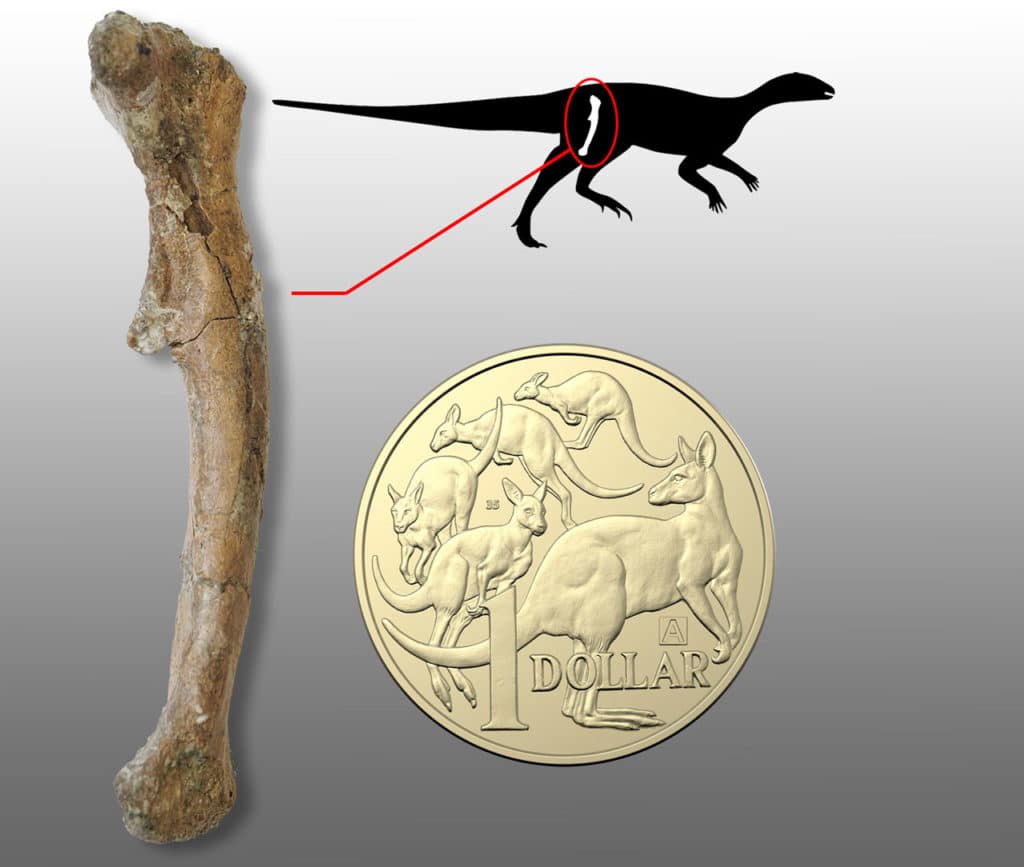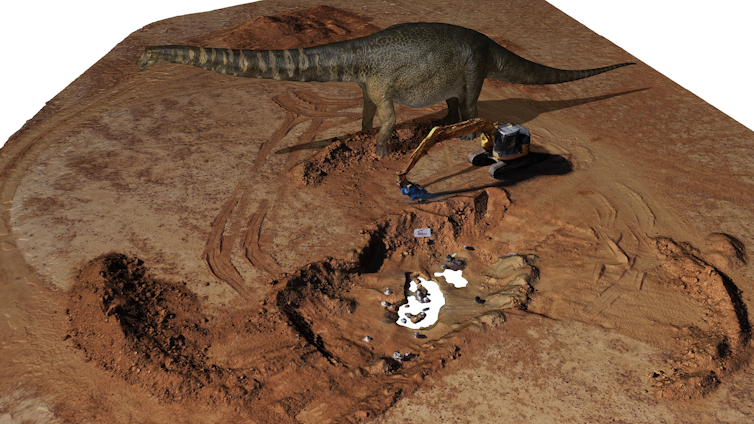An artist’s depiction of the ornithopod dinosaur Weewarrasaurus pobeni tending its nest. Image credit: University of New England.
SciNews has a story about the fossils of baby Ornithopod dinosaurs discovered in Australia. The animals are baby Weewarrasaurus pobeni dinosaurs, that lived about 100 million years ago during the middle Cretaceous period.
Southeastern Australia, where these dinosaurs lived, was much closer to the South Pole at the time. These specimens reveal important insights into high-latitude breeding in Gondwana. A recent paper in journal Scientific Reports has all the details.
The newly studied fossils belong to a species of small-bodied ornithopod dinosaur very similar to Weewarrasaurus pobeni.

To estimate the individuals’ age, the researchers used growth rings in the dinosaur bones, similar to the rings in a tree trunk.
“Age is usually estimated by counting growth rings, but we couldn’t do this with our two smallest specimens, which had lost their internal detail,” said Justin Kitchener, a PhD student in the School of Environmental and Rural Science at the University of New England.
“To get around this, we compared the size of these bones with the size of growth rings from the Victorian dinosaurs. This comparison confidently places them at an early growth stage, probably prior to, or around the point of hatching.”

Approximately 100 million years ago, when these dinosaurs were being born, Australia was much closer to the South Pole.
“Southeastern Australia would have been between 60°S and 70°S, equivalent to modern day Greenland,” the scientists explained.
“Although the climate at these latitudes was relatively warmer than they are today, like some Antarctic penguins, these dinosaurs would have endured long dark winters and possibly burrowed or hibernated to survive.”
Source: esconi.org








